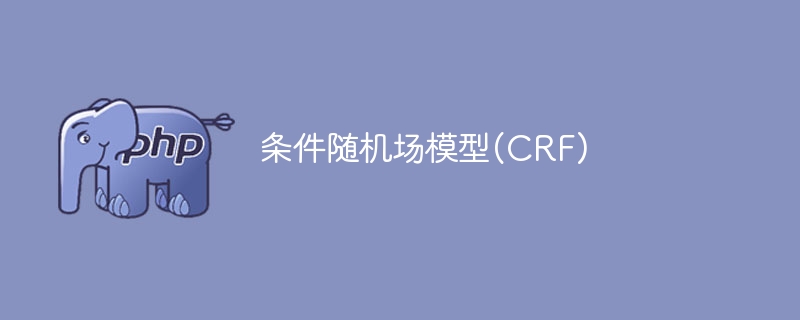

Conditional Random Field (CRF) is a probabilistic graphical model used to model the joint probability distribution of labeled sequences. As a discriminant model, its goal is to learn the probability distribution of the output variable Y under the condition of the input variable X. CRF is widely used in fields such as natural language processing, computer vision, and bioinformatics. It is capable of modeling sequence data and making label predictions by considering contextual information. In natural language processing, CRF can be used for tasks such as named entity recognition, part-of-speech tagging and syntactic analysis. In computer vision, CRF can be used for tasks such as image segmentation and object recognition. In bioinformatics, CRF can be used for tasks such as gene identification and protein structure prediction. By considering the global characteristics and contextual information of the sequence, CRF can improve the performance and robustness of the model.
The basic assumption of CRF is that given the input sequence Positions are conditionally independent. That is to say, each output variable Yi only depends on the corresponding input variable Xi and the output variables Yi-1 and Yi 1 at the previous and next positions, and has nothing to do with the output variables at other positions. This assumption allows CRF to efficiently handle sequence tagging problems, such as named entity recognition, part-of-speech tagging, and chunk analysis. The independence assumption of CRF allows the model to capture local dependencies in the input sequence, thereby improving annotation accuracy and performance.
The CRF model can be expressed as an undirected graph, where each node represents an output variable Yi, and the edges between the nodes represent the dependence between the two output variables. Specifically, if there is a dependency between two output variables Yi and Yj, then there is an edge connecting them. The weight of an edge represents the corresponding conditional probability, which can be estimated by learning the training data.
The training process of CRF involves maximizing the log-likelihood function of the training data, including the conditional probability of the observed variable (input variable X) and the output variable (labeled sequence Y) The product of conditional probabilities. By using an optimization algorithm such as stochastic gradient descent, this function can be maximized to obtain the parameters of the model.
The prediction process of CRF includes calculating the conditional probability distribution of the output sequence Y under the input sequence X, and selecting the output sequence with the highest probability as the prediction result. For efficient computation, a forward-backward algorithm can be used.
In addition to the basic linear chain conditional random field (Linear Chain CRF), there are also more complex conditional random field models, such as nonlinear chain conditional random field (Non-Linear Chain CRF) and conditional random field neural network (CRF-NN). These models can handle more complex sequence labeling problems, but also require more computing resources and more training data.
CRF, as an unsupervised learning algorithm, has been widely used in fields such as natural language processing, computer vision, and bioinformatics. In the field of natural language processing, CRF is often used for tasks such as named entity recognition, part-of-speech tagging, syntactic analysis, and text classification. In the field of computer vision, CRF is often used for tasks such as image segmentation, target tracking, and pose estimation. In the field of bioinformatics, CRF is often used for tasks such as gene identification and protein structure prediction.
The above is the detailed content of Conditional random field model in machine learning. For more information, please follow other related articles on the PHP Chinese website!




